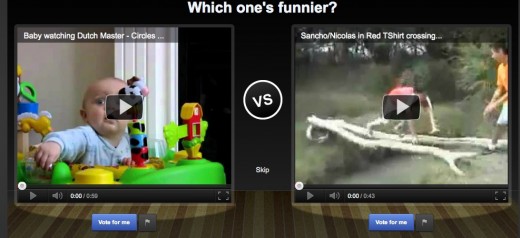
At the end of last year, we told you about a new project by YouTube called the “YouTube Slam“. The project pits two videos against one another in a “hot or not” style competition. The site lets you watch two videos and decide which one is better, or in the case of comedy, funnier.
That project alone wasn’t scientific or geeky enough for Google, so the company decided to delve deeper into what makes videos funnier and how the company can detect that you enjoyed it more than any other old video.
One place the company decided to go was within the comments on all of the videos that participated in the YouTube Slam. By looking at the content of the comments, it found that many people would leave a quick “hahaha” or “LOL”. Comments that display the humor you found in the video can help the company rank the popularity of a video in a slightly different way. This data on top of what it was already collecting with your votes, might just tell us which videos are actually funnier.
Surprisingly, the company found that the more o’s you put in your LOL comments on the video, the funnier you thought it was. It was a pattern it picked up time and time again, so Google has decided to build it in to an algorithm which ranks the funniest videos:
Next we needed an algorithm to rank these funny videos by comedic potential, e.g. is “Charlie bit my finger” funnier than “David after dentist”? Raw viewcount on its own is insufficient as a ranking metric since it is biased by video age and exposure. We noticed that viewers emphasize their reaction to funny videos in several ways: e.g. capitalization (LOL), elongation (loooooool), repetition (lolololol), exclamation (lolllll!!!!!), and combinations thereof. If a user uses an “loooooool” vs an “loool”, does it mean they were more amused? We designed features to quantify the degree of emphasis on words associated with amusement in viewer comments. We then trained a passive-aggressive ranking algorithm using human-annotated pairwise ground truth and a combination of text and audiovisual features. Similar to Music Slam, we used this ranker to populate candidates for human voting for our Comedy Slam.
How scientific is it exactly? Your guess is as good as mine, but the minds at Google always come up with a way to quantify huge amounts of data so the “LOLSignal” sounds just as good as any other.
If you haven’t participated in the YouTube Slam project yet, it’s a fun way to kill boredom for hours on end.
Get the TNW newsletter
Get the most important tech news in your inbox each week.





